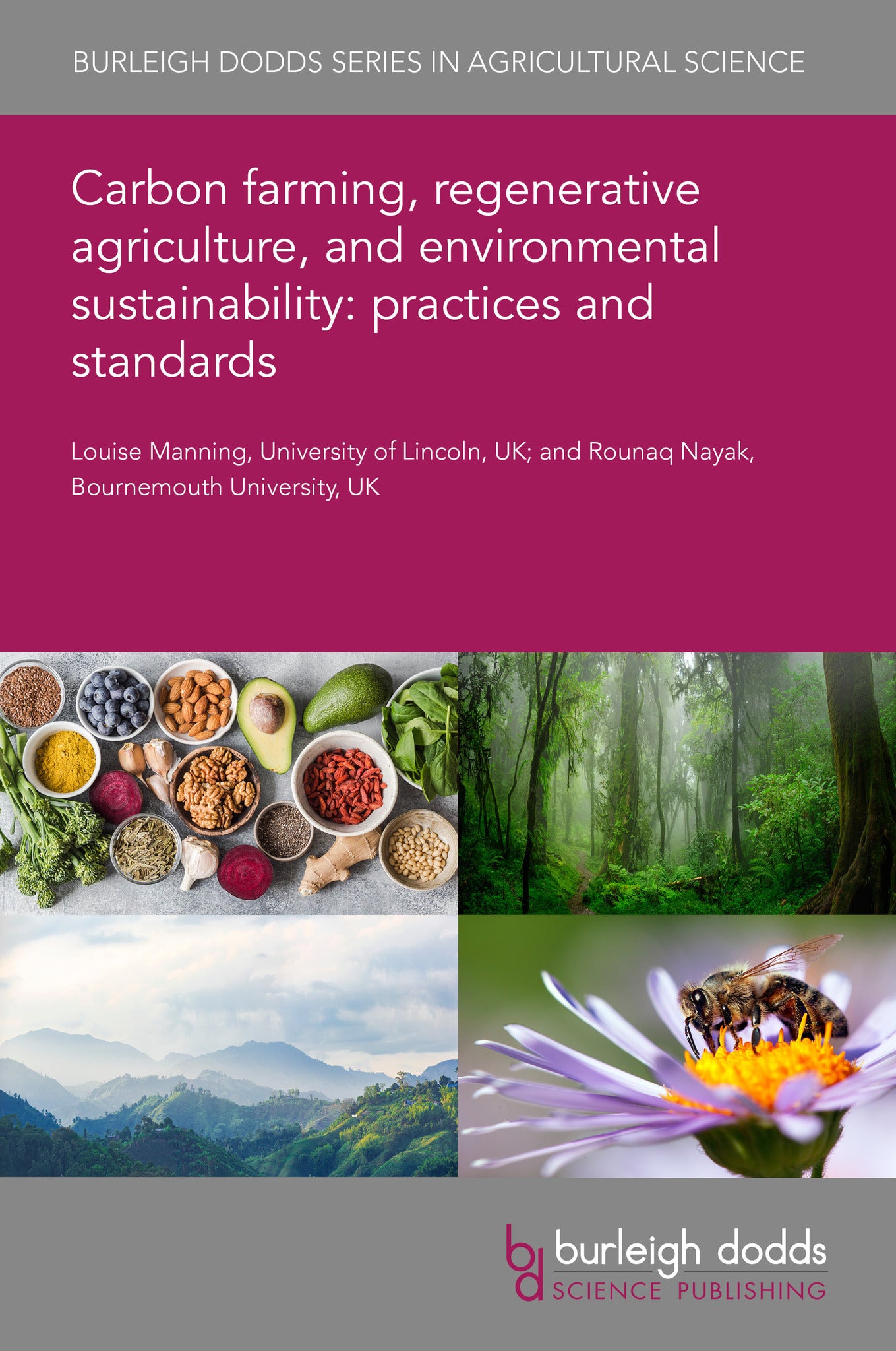We're sorry. An error has occurred
Please cancel or retry.
Carbon farming, regenerative agriculture, and environmental sustainability: practices and standards

Some error occured while loading the Quick View. Please close the Quick View and try reloading the page.
Couldn't load pickup availability
- Format:
-
18 November 2024

The carbon cycle has always been a crucial element of agri-food production. However, the rise in atmospheric CO2 from around 280 parts per million (ppm) in 1780 pre-industrial revolution to 424 ppm in 2023 has led to focus both on how farming has contributed to this imbalance and, in particular, how it can contribute to halting and then reversing this trend. This chapter reviews ‘carbon farming’ which incorporates both practices for sequestering atmospheric carbon and/or for reducing the production of greenhouse gases at farm level. It reviews practices, measurement issues and options for carbon trading. These are set in the context of wider developments such as regenerative agriculture as well as other initiatives to improve environmental stability in farming.

TECHNOLOGY & ENGINEERING / Food Science / Food Safety & Security, Sustainable agriculture, TECHNOLOGY & ENGINEERING / Agriculture / Sustainable Agriculture, TECHNOLOGY & ENGINEERING / Agriculture / Agronomy / Crop Science, TECHNOLOGY & ENGINEERING / Agriculture / Animal Husbandry, Food security and supply, Agriculture, agribusiness and food production industries, Agronomy and crop production, Animal husbandry

- 1 Introduction
- 2 Carbon farming
- 3 Measuring carbon balances
- 4 Product carbon footprints and life cycle assessment
- 5 Carbon trading
- 6 Regenerative agriculture
- 7 Supply chain standards for environmental sustainability
- 8 Conclusion
- 9 Where to look for further information
- 10 References



